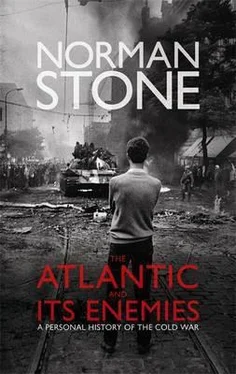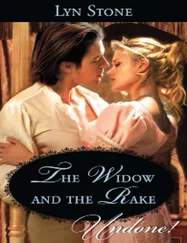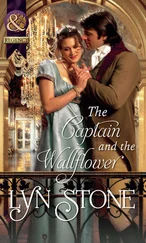If Chile had been Cuba, no doubt matters would then have come to a breach. But Castro had come to power in the outcome of a revolution that had destroyed the old army; there was no parliament or constitution of any significance. Allende did not have Castro’s tools. Without dollar support, by September 1971 inflation was going up. It always was a problem in the state-dominated Chilean economy, with a balance of payments deficit, and with swollen employment rolls and pay-packets; Allende imposed price controls. These had the usual effect, of driving down supply, and, besides, the consequence of the land seizures was also to cause shortages, which in turn could be made up only through imports, of $280m (including French chickens). These led to the creation shortages and queues, and there was a sign of things to come when 5,000 middle-class housewives, banging saucepans, were met by teargas.
Matters worsened up to the summer of 1972, as, even on official figures, the cost of living rose 163 per cent. The government tried to control prices (through a Cuban in the Directorate of Industry) but hardly knew what it was doing: the lorry drivers, on whom Chile, a very ‘long’ country, depended, went on strike, and the queues lengthened. ‘Planning’ had been reinforced, and what it entailed was the taking on of more and more labour for concerns that were unsuccessful: ‘floods of red ink on the books of nationalized firms,’ said the American ambassador (himself not at all anxious for any kind of American intervention: he did not do his career any good). Investment fell off, as people bought black-market dollars or went abroad. One outcome of the land reform was predictable: harvests dropped by one quarter in 1973. Trade union elections were ‘rigged’, so that ordinary workers’ behaviour could be dictated, despite their own wishes, from the radical Left, and such ‘rigging’ became easy enough because so many workers were standing in queues or otherwise making ends meet: apathy, the abstention of the voters, generally does occur on a great scale in the course of a ‘revolutionary situation’. Even in the great October of 1917, in elections for the trade unions, most people did not bother to vote, because they were tired, bored and bewildered. The Bolsheviks got their majority at last.
At the turn of 1972-3 there was a long-standing row over the free press, much of which was of course bitterly critical. A great newspaper concern was squeezed by the government, with taxes and extra rules, and it was threatened with bankruptcy and expropriation — an obvious way of preventing opposition media from operating at all. In the University of Chile there was a long battle between the Christian Democrat Rector and a Marxist governing board. The Left seized the television station for eight months, and was able to defy court orders; there was a clique of journalists at the government’s bidding, and the print or delivery unions were used to muzzle the right-wing Mercurio. There were restrictions on travel, though many of the better-off and mobile had already left, foreseeing the worst. In the summer of 1972 Allende was making no effort to control the MIR in the universities, perhaps hoping to provoke the Right into a premature uprising. On top of everything else, and despite promises made to the Christian Democrats, a law for ‘Unified National Education’, which would affect the private schools, was to be pushed through at the turn of 1972-3. But Allende had gone too far.
He now faced challenges. His actions were undertaken by executive authority, and he was regularly condemned in the parliament; the majority against him was just short of the two thirds needed to overturn his presidential veto, and the constitutional court became involved (though it shrank, as yet, from conflict). The Christian Democrats joined up with the Right, to face elections in March 1973, and, with claims of electoral corruption and fraud, took over half of the vote. As small shopkeepers went on strike, the government attempted to take over the also striking lorry drivers, and met its match: nails welded together as tyre-bursting devices, lorries hidden in forests, or banded together in such great numbers as to require regular siege. Perhaps, if the Chilean Left had been adequately led, it would have staged its revolution: after all, no Communist worth his salt would have bothered about hostile parliamentary majorities. Armed peasant squatters and shanty towns would have been ‘Red Guards’, there would have been a terroristic secret police, Communists would have penetrated the army and elections would have been ‘rigged’ with ballot boxes ‘stuffed’ with fake votes — the story of any Communist takeover in peacetime. These things did indeed happen, but on a small scale, and the Left seems to have succumbed to infantilism — supposing that it was destroying the economic base of imperialism, whereas the reality was just play-acting. True, Jacques Chonchol, the agriculture minister, romantically pursued his land reforms, and a Communist ideologue, Volodia Teitelboim, stirred up the shanty towns; the interior minister, Carlos Prats, went with Allende to Moscow in November 1972, and workers themselves struck against the lorry drivers’ strikes, but none of this amounted to a serious attempt to take power in the Communist manner: indeed, when a mass demonstration was staged against ‘Fascism’, Prats shrieked from his podium, ‘If you are against Fascism, jump!’ A hundred thousand people then jumped. The Soviet ambassador, standing next to his American colleague, remarked that there were more effective ways of fighting Fascism. But if Allende could not seize power, he could at least create chaos, and that was Chile’s condition. He had printed money — more than a 100 per cent increase in 1970, 171 per cent in 1971, with a deficit of 40 per cent in 1972 and a 163 per cent increase in the cost of living. There was a small sign that the armed forces would intervene when a brief mutiny occurred, squashed by other elements in the military. Allende then mobilized some Red Guards, and alienated the military in general.
But he was now being widely condemned. The government itself was beyond the law; the coup, though long drawn-out and ineffectual, was Allende’s, not the army’s. General Pinochet was acting quite constitutionally. In June 1973 an all-services committee of fifteen drew up contingency plans for a takeover, although they were not put into effect until 9 September. Some study was made of the little Soviets that the Left had established in the shanty towns; there were photographs of people to be arrested, and since the army could search for weapons, the soldiers had an opportunity for arrests. Allende himself would not opt for a revolutionary way forward — he did not ‘arm the workers’ — but he would also not act against the extreme Left, although even the Communists were uncomfortable with it. In the summer of 1973 matters went downhill — a 40 per cent devaluation, an attack by the government on Catholic schools, a collapse of export earnings, strikes by buses and even by doctors, and another strike by truck drivers, threatened by nationalization; there was a constant parliamentary crisis. Congress, the constitutional court and the controller-general (who oversaw the legality of administration) all condemned the government, which argued that, if all cabinet members signed a document opposing a decision of the court, then that must stand; whereupon the opposition introduced proceedings to impeach ministers, whose signatures would then not be valid. In the end, there were rumours of a mutiny in the navy at Valparaíso, instigated by the revolutionary-minded Altamira. In another attempt to placate the military, Allende agreed to the removal of his own general, Prats, and his place was taken by Augusto Pinochet. That day — 22 August — the Chamber of Deputies passed a resolution declaring that Allende was outside the law and the constitution.
Читать дальше












![Edward Ellis - Adrift on the Pacific - A Boys [sic] Story of the Sea and its Perils](/books/753342/edward-ellis-adrift-on-the-pacific-a-boys-sic-s-thumb.webp)